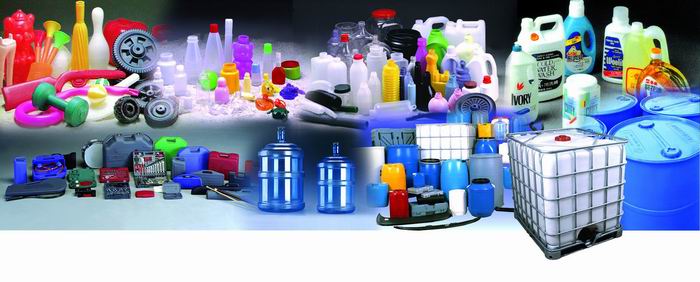Blow Molding Techniques Introduction
Hollow plastics products such as a squeeze bottles, milk bottles, fuel tanks, toys, oil containers, chemical tanks, furniture, electrical housing, are blow moulded. Different processes are used but basically all of them are similar.
The basic process involves producing a plastic parison or preform (tube, pipe, or test tube plastic shape), placing this preform into a closed two plate mold, injection of air into the heated parison to blow it out against the mold cavity, cooling of the expanded parison, opening of the mold, and removing the rigid blow molded part.

Blow molding technique basically divided into three categories, namely, the extrusion blow molding process which principally uses as unsupported parison, and the injection blow molding process which uses a preform supported on a metal core pin. The third major category is called the stretch-blow molding process. Stretch-blow molding can be started with either the extrusion or injection blow molding process. By stretching at prescribed temperature the properties of many plastics can be significantly improved providing cost / performance advantages.
These processes provide different advantages to produce all type of products; so it is necessary to examine the process to be used based on product / performance requirements, material performance and the production quality. As an example , the plastic bottle does more than hold the product. It combines safety, light weight, design freedom, appealing colors, and low energy usage. Other factors to be examine in the blow container can be the desired shelf life, moisture barrier, oxygen barrier, drop strength, heat distortion, compatibility of plastic and product, top load, environmental stress cracking, clarity requirements, coloring of the plastic material, and cost.
In extrusion blow molding the advantages include high rate of production, low tooling cost, blown handle ware, wide selection of machine manufacturer. Disadvantages are usually high scrap rate, recycling of the scrap, limited wall thickness control or material distribution, the fact that the trimming can be accomplished in the mold for certain type mold or secondary trimming operations have to br included in the production lines.
With injection blow molding, the major advantages include the fact that no scrap or flash is molded, best wall thickness and material distribution control, best surface finish of the part, low volume production quantities which are economically feasible. Disadvantages are high tooling cost, no handle ware, the fact that based on the cost to produce large extruded blow molded parts the injection blow molded is limited to smaller sizes. Advantages and disadvantages are similar for the stretched blow molding. The major advantage is that cost / performance can be significant to certain sizes of products such as the carbonated beverages bottle.
Important factors to be consider when examine the blow molded process to be used usually start with the part size, number to be manufacturer, design / shape, and cost limitations.
– By Zafar Kamal









